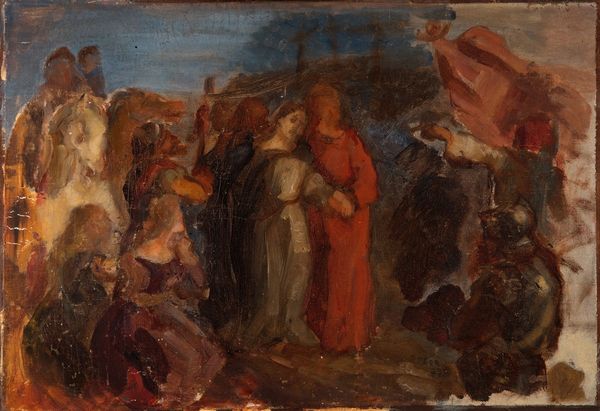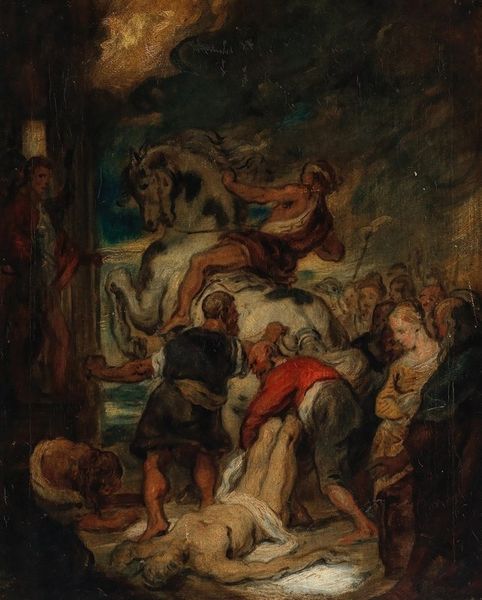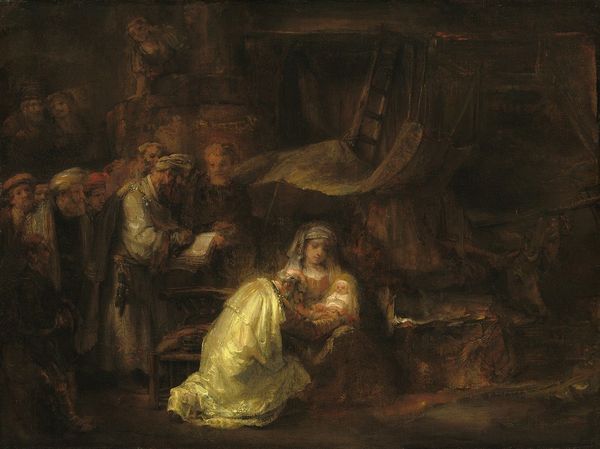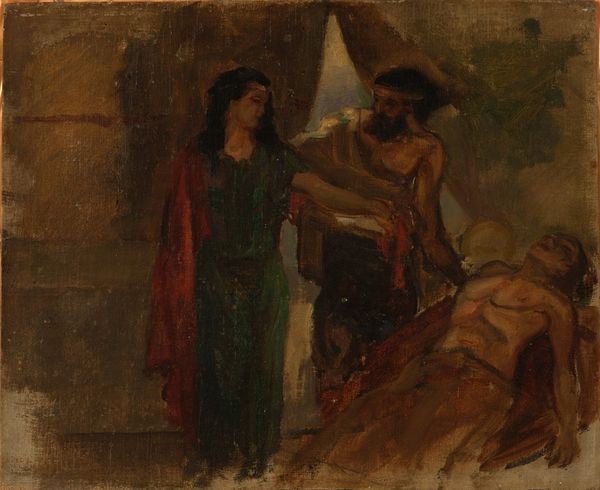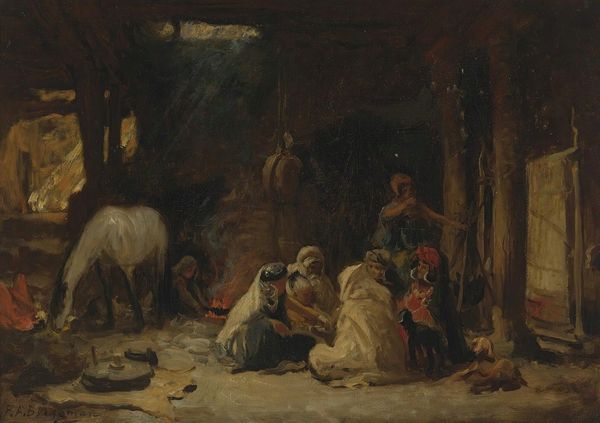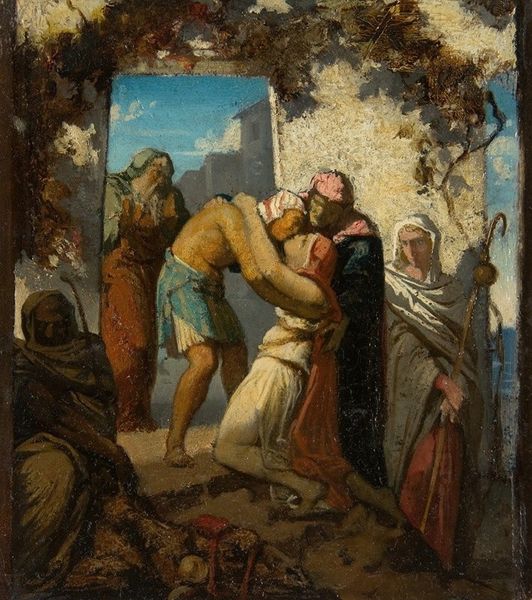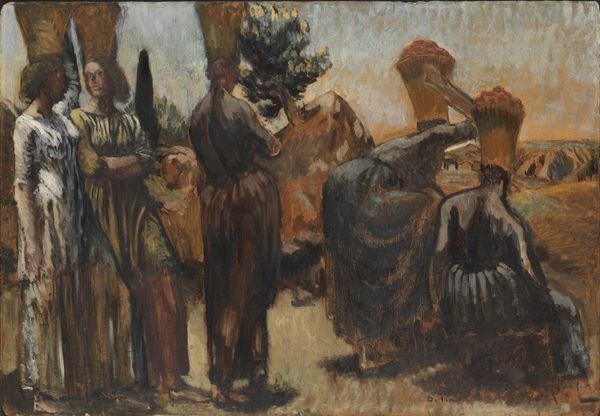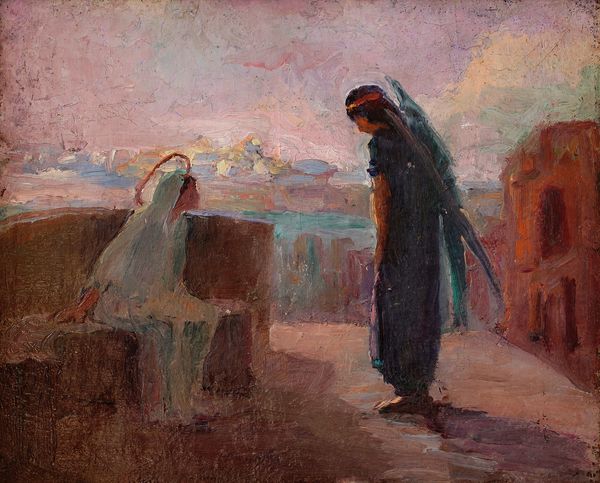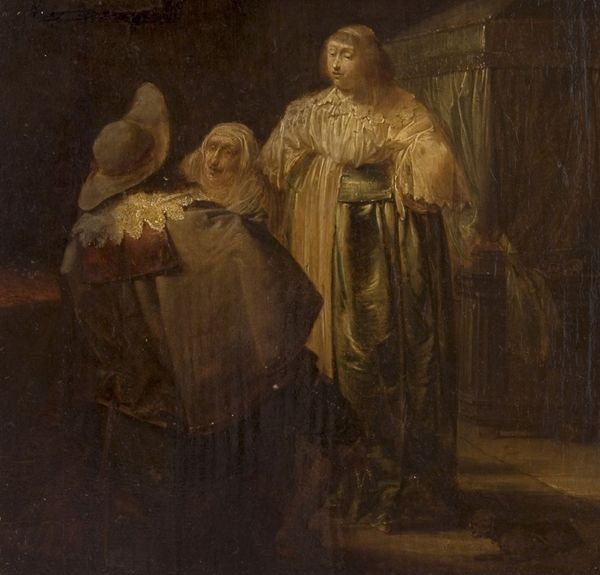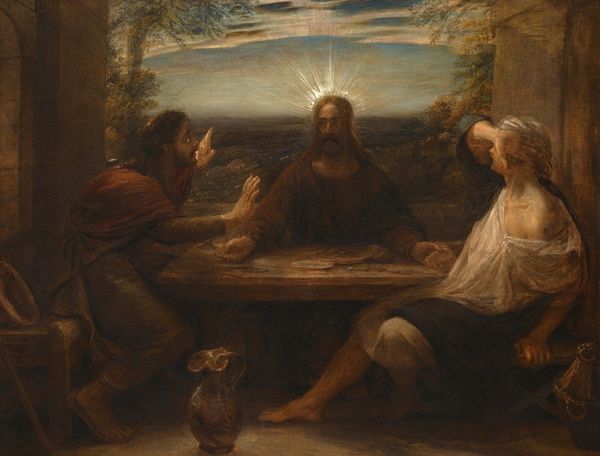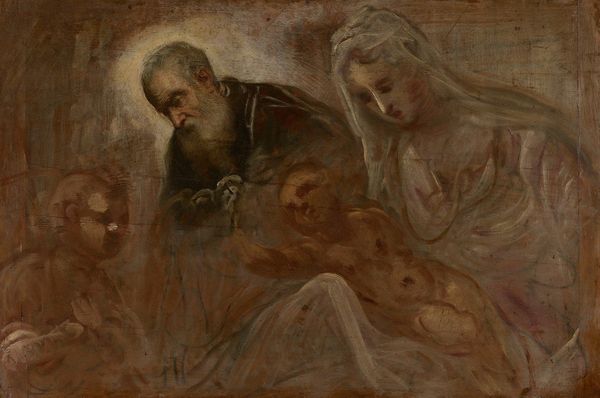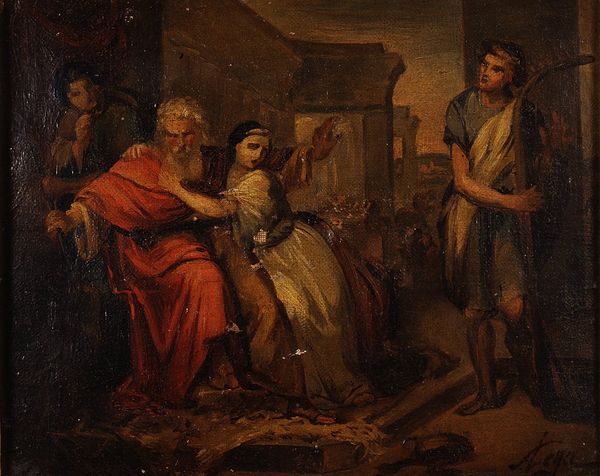
Copyright: Public Domain: Artvee
Curator: Ah, "Return of the Prodigal Son," painted in 1877 by James Ensor. Doesn't it just hum with emotion? I'm immediately struck by the vulnerability radiating from the figures. The son looks spent. Editor: It's certainly…murky. It reminds me of the low lighting and thick materiality found in much baroque era religious paintings, relying on layers of oil paint to communicate what can be seen on its canvas, though executed about two centuries later. What do we make of the darkness, the almost obscured architectural elements? Curator: For me, the gloom intensifies the intimacy. It's as though we are peering into a sacred moment, a quiet reckoning. Ensor wasn't merely illustrating a biblical story, I suspect; he was delving into the raw core of human experience—the humility of the supplicant and boundless grace of the elder. Editor: Yes, but those paints – where did they come from? How much did they cost? And who prepared them? Consider the industrialization that Ensor would have witnessed and perhaps the painting suggests a subtle critique of these values, a return to fundamental values. Curator: Interesting, focusing on the "where" and "how" rather than the "why." Perhaps you're not wrong to ground it in a very specific time, a rapidly changing economic landscape. Though I’m inclined to focus on the story of Ensor and his familial relations, projecting, and interpreting with great sympathy—the emotional weight is, as ever, very compelling. Editor: I do see how tempting that is. Think of the sheer labour involved in the creation, not merely in application, but in the harvesting of materials, the social framework. This makes “high art,” far more a question of accessible, not inaccessible luxury. Curator: The muted palette certainly amplifies this notion of accessing base material. Ensor, it feels, worked with a degree of raw intensity to channel a profound tale of unconditional love. And you…you help to appreciate what resources he brought together in that journey. Editor: Exactly, we see his vision embedded within a vast structure. In conclusion, through its brushwork, the use of precious oil paint and exploration of an intimate subject, this piece invites not only reflection but critical engagement, blurring the line between the personal and political. Curator: Beautiful. Let's hope our insights prompt similar connections for listeners today!
Comments
No comments
Be the first to comment and join the conversation on the ultimate creative platform.
